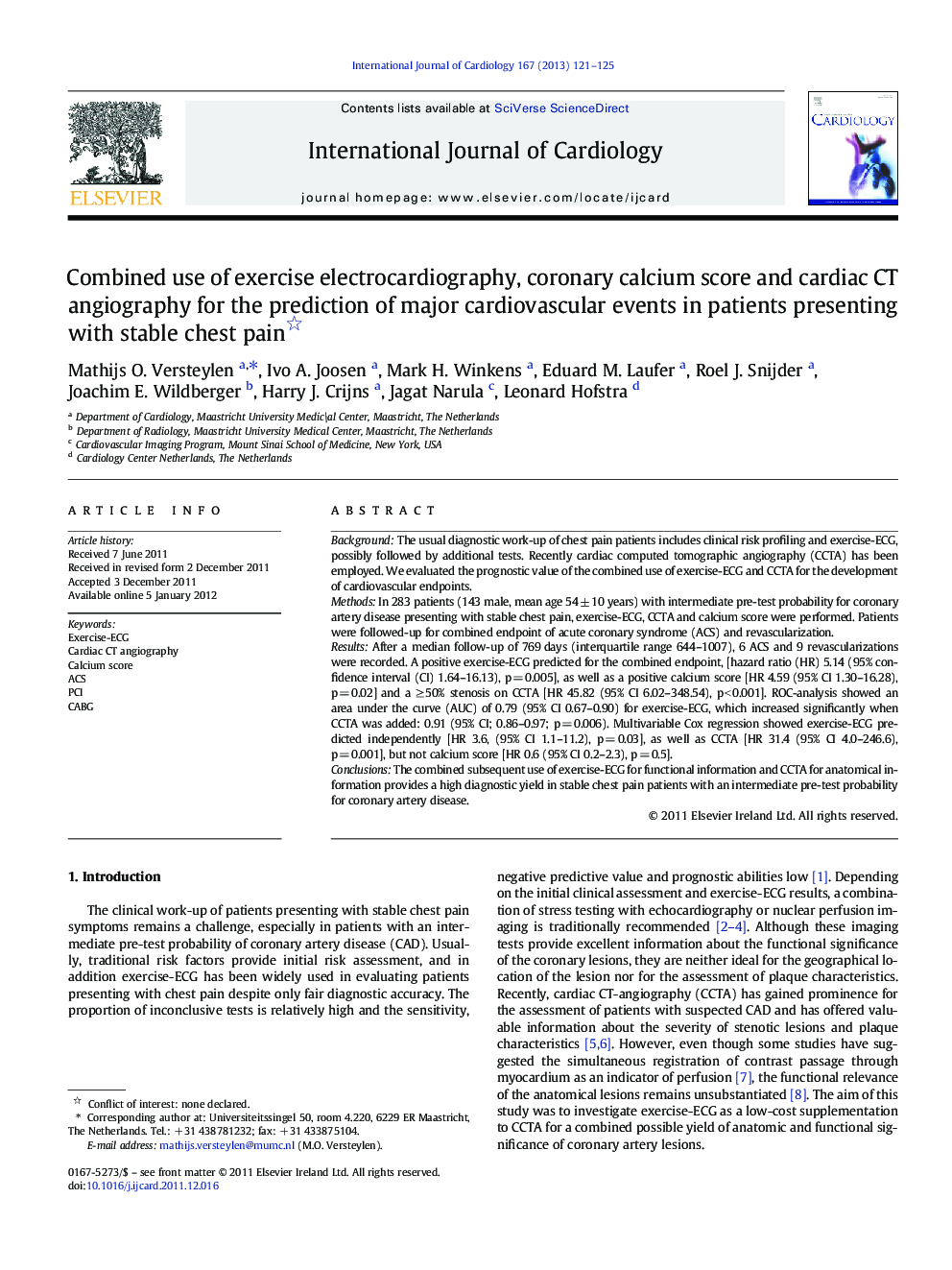| Article ID | Journal | Published Year | Pages | File Type |
|---|---|---|---|---|
| 5975808 | International Journal of Cardiology | 2013 | 5 Pages |
BackgroundThe usual diagnostic work-up of chest pain patients includes clinical risk profiling and exercise-ECG, possibly followed by additional tests. Recently cardiac computed tomographic angiography (CCTA) has been employed. We evaluated the prognostic value of the combined use of exercise-ECG and CCTA for the development of cardiovascular endpoints.MethodsIn 283 patients (143 male, mean age 54 ± 10 years) with intermediate pre-test probability for coronary artery disease presenting with stable chest pain, exercise-ECG, CCTA and calcium score were performed. Patients were followed-up for combined endpoint of acute coronary syndrome (ACS) and revascularization.ResultsAfter a median follow-up of 769 days (interquartile range 644-1007), 6 ACS and 9 revascularizations were recorded. A positive exercise-ECG predicted for the combined endpoint, [hazard ratio (HR) 5.14 (95% confidence interval (CI) 1.64-16.13), p = 0.005], as well as a positive calcium score [HR 4.59 (95% CI 1.30-16.28), p = 0.02] and a â¥Â 50% stenosis on CCTA [HR 45.82 (95% CI 6.02-348.54), p < 0.001]. ROC-analysis showed an area under the curve (AUC) of 0.79 (95% CI 0.67-0.90) for exercise-ECG, which increased significantly when CCTA was added: 0.91 (95% CI; 0.86-0.97; p = 0.006). Multivariable Cox regression showed exercise-ECG predicted independently [HR 3.6, (95% CI 1.1-11.2), p = 0.03], as well as CCTA [HR 31.4 (95% CI 4.0-246.6), p = 0.001], but not calcium score [HR 0.6 (95% CI 0.2-2.3), p = 0.5].ConclusionsThe combined subsequent use of exercise-ECG for functional information and CCTA for anatomical information provides a high diagnostic yield in stable chest pain patients with an intermediate pre-test probability for coronary artery disease.
